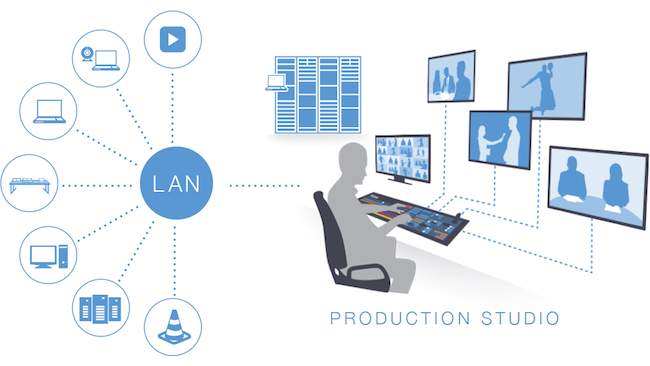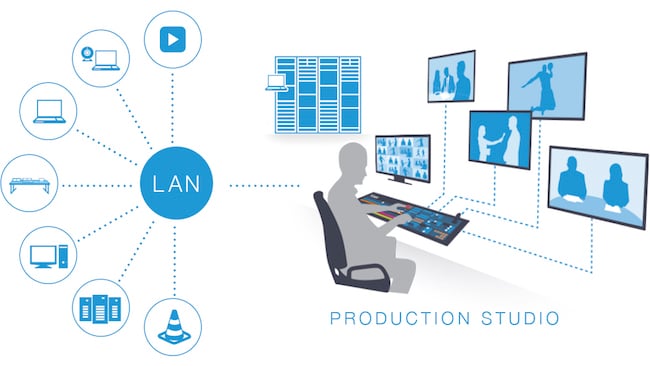
 The shape of things to come
The shape of things to come
Networks can do things that should be impossible. We’re going to take a quick look at three of them.
1) Send several video channels down the same wire and separate them at the other end
In the analogue world, when you mix signals together, you can’t unmix them. You can’t take a Coldplay track and somehow reverse engineer it so that you end up with the multitrack master tape.
So how can you do it with a network cable? It’s a complicated process, but it’s easy to explain. Each video stream is chopped up and the pieces are wrapped into packets. Each packet carries the address of its destination. Even though packets from other sources are intermingled in the process, each video stream is reassembled when it arrives and because the data is digital, it’s exactly the same as the original, before it was “packetised”.
So you really can mix multiple video signals together and unmix them at the other end.
2) Get rid of physical inputs and outputs
Until now, it’s been necessary to have an input or output connection for every video channel. On the back of a video switcher, there's typically an SDI socket for every input and every output. On a big switcher, you might find tens or even hundreds. They same goes for every other type of video hardware. But with a network infrastructure, none of this is necessary - because all the channels are available on a single cable.
Getting rid of physical inputs and outputs has other benefits too. Without the need for a physical connection for every video input or output from a video device it’s up to the device how many channels of input or output it wants to make available. There are no fixed limits. It’s a new way to work and it’s wonderful.
3) Sending video over a network can result in improved quality
Have you ever listened to music streamed over Spotify (or one of the other streaming music providers)? How does it sound? Pretty good! In fact you’d have to be picky to know you weren’t listening to a CD.
Most people have their broadband delivered through a telephone wire, and telephones sound terrible. Telephones were engineered to reproduce the minimum possible sound quality that’s consistent with understanding what’s being said. You wouldn’t expect great audio from such a system.
But if you digitise and compress the data so that it takes up less space, you can either send more streams down the same pipe, or higher quality in the “space” you have. That’s how Spotify manages to sound so good over a phone line, and it’s how very high quality can be sent over networks that don’t appear on the face of it to be fast enough. You don’t expect compression to make things sound or look better, but the reality is that compression is an enabling technology. Often, without it, you would either have no image or audio, at all. Compression makes room for quality.
NewTek’s NDI can send ten HD channels of video through a single Gigabit Ethernet connection without visual loss. Upgrade to 10 Gigabit Ethernet or, ultimately Fibre and there’s almost no practical limit.
Learn more about NewTek NDI.
Tags: Production IP Video



Comments